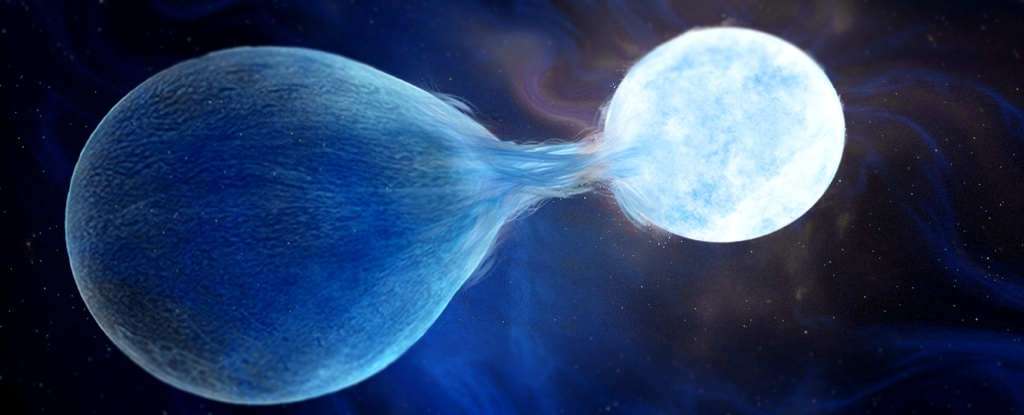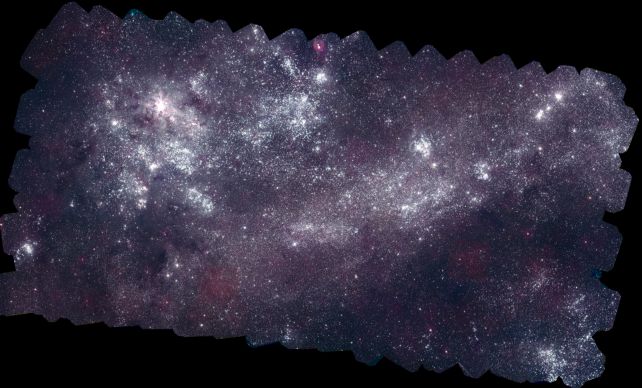
When colossal stars meet their end, it’s not a quiet affair. Their demise manifests as a supernova spectacle, outshining an entire galaxy in the night sky. This cosmic display propels stellar material into space while the star’s core transforms into a black hole or a neutron star.
We have documented several of these bursts and examined their light to discern the precise composition of stars. Interestingly, scientists have observed a peculiar pattern.
Supernovas exhibit an enigmatic absence of hydrogen, indicating the existence of a notable population of stars lacking in hydrogen, from which these supernovas originate. Astronomers had foreseen that approximately one-third of all potential progenitors for massive supernovas must be deficient in hydrogen.
However, in the quest to identify potential hydrogen-poor supernova candidates in the Universe, searches only yielded a solitary and unsatisfactory option, leaving scientists puzzled and in search of answers. Read more here.
Now, there’s no more head-scratching. A targeted survey aimed at discovering these stars has successfully uncovered 25 stars that precisely fit the criteria. These postulated stars do exist, and we have now mastered the art of identifying them.
“This was such a big, glaring hole” declares astronomer Maria Drout of the University of Toronto, who co-headed the investigation alongside astrophysicist Ylva Götberg from the Institute of Science and Technology Austria. At the time, Götberg was associated with The Observatories of the Carnegie Institution for Science in Pasadena, USA. Read more here.
“If it turned out that these stars are rare, then our whole theoretical framework for all these different phenomena is wrong, with implications for supernovae, gravitational waves, and the light from distant galaxies. This finding shows these stars do exist.”
As per the theoretical framework, stripped-envelope supernovas, the term for these hydrogen-poor supernovas, are generated by binary star systems.
We’ve previously observed stars in closely-knit binary systems exchanging material. In such partnerships, one star pulls the hydrogen envelope from its binary companion, resulting in a helium star with minimal hydrogen. Consequently, when the companion star eventually undergoes a supernova, it releases little hydrogen.
We’ve observed helium stars at the upper limit of the stellar mass spectrum; these stars are massive enough that, upon their demise, their cores collapse into black holes. However, in the intermediate range, encompassing stars with initial masses between 8 and 25 times that of the Sun, such instances have been scarce.
This presents a challenge. These stars serve as the forerunners to neutron stars and, as per theoretical predictions, are the precursors of neutron star mergers. They ought to be considerably more abundant than their larger counterparts.
However, these stars are more elusive. Bereft of their outer layers, a significant portion of the emitted light falls beyond the visible spectrum. Additionally, with a larger, more luminous companion star, which has absorbed all the recently consumed hydrogen, in a close orbit, the helium star becomes even more challenging to detect.
Hence, the scientists conducted their surveys in ultraviolet light. From 2018 to 2022, they utilized the Swift Ultra-Violet/Optical Telescope to scrutinize millions of stars in the Large and Small Magellanic Clouds, which are dwarf galaxies orbiting the Milky Way. Identifying 25 candidates with distinctive ultraviolet profiles, they conducted further investigations using the Magellan Telescopes to collect optical spectroscopic data, unveiling the chemical compositions of the stars.

Their predictions were spot-on. The identified stars exhibited the anticipated characteristics of intermediate-mass helium stars, including high temperatures, high surface gravity, abundant helium, and low hydrogen content. Impressively, sixteen of these stars displayed motion patterns consistent with having a binary companion.
“We showed that these stars were bluer than the stellar birthline, the bluest phase in a single star’s lifetime,” Götberg says.
“Single stars mature by evolving towards the redder region of the spectrum. A star only shifts in the opposite direction if its outer layers are removed – something that is expected to be common in interacting binary stars and rare among single massive stars.”
This marks an initial stride. The team is presently delving deeper into the study of these stars to gain additional insights and is broadening its exploration to identify additional helium stars. Moreover, they have shared their data and theoretical models openly, encouraging other scientists to participate in the quest.
“This work allowed us to find the missing population of intermediate-mass, stripped helium stars, the predicted progenitors of hydrogen-poor supernovae. These stars have always been there and there are probably many more out there. We must simply come up with ways to find them,” says Götberg.
“Our work may be one of the first attempts, but there should be other ways possible.”
The findings have been documented in the journal Science.





